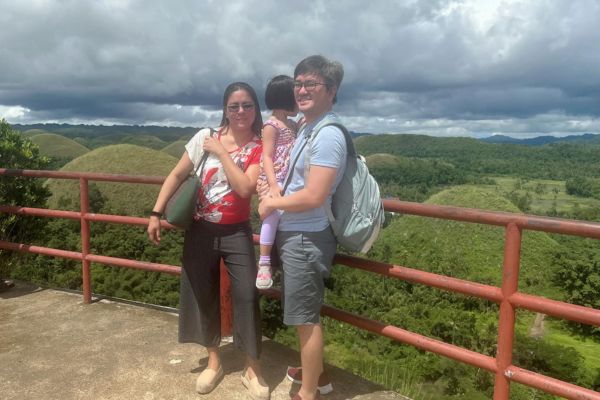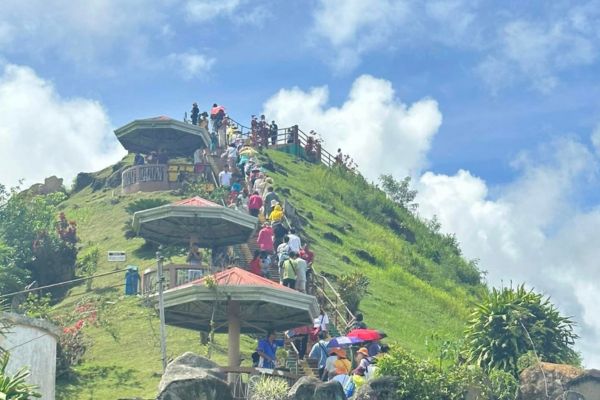How Chocolate Hills in Bohol Formed
Imagine an endless expanse of perfectly shaped, conical mounds stretching as far as the eye can see. This is what my mother asked me when described Bohol to me when I was a kid, I thought it was some kind of a joke she was playing. But, this isn’t a fantasy land, it’s the very real and mesmerizing Chocolate Hills in Bohol, Philippines. Famous worldwide for their unique beauty and perplexing formation, these geological wonders attract visitors from all corners of the globe.

Geological Formation of the Chocolate Hills
The Origin of the Chocolate Hills
Have you ever wondered how the Chocolate Hills in Bohol were formed? The tale of their origin is as fascinating as it is ancient. Millions of years ago, during the Late Pliocene to Early Pleistocene epochs, tectonic activities began to shape what we now know as Bohol Island. These events set the stage for the creation of around 1,200 to 1,700 hills spread over an area of more than 50 square kilometers.
Coral Reefs and Limestone Formation
Interestingly, the Chocolate Hills owe much of their existence to coral reefs! These hills started as coral deposits that solidified into limestone over millions of years. Through a process known as uplift, movements in the Earth’s crust pushed these ancient coral reefs above sea level. Additionally, when you look at these hills today, you’re essentially looking at the remnants of ancient coral formations. Isn’t that mind-blowing?
Karst Landscape of Bohol Island
Bohol Island sits atop what’s considered a karst landscape, characterized by soluble rock such as limestone. Over time, water and natural erosive processes sculpted the limestone into the iconic conical shapes we see today. This mix of geological and erosive activities resulted in the unique natural beauty of the Chocolate Hills.
The Unique Features of the Chocolate Hills
Composition and Structure
These mounds aren’t just pretty to look at, they are geological masterpieces. Composed predominantly of limestone, the Chocolate Hills vary in height from 30 to 50 meters. Their almost uniform size and shape are a testament to the remarkable forces of nature that created them.
Seasonal Changes
One of the most captivating aspects of the Chocolate Hills is their seasonal transformation. During the dry season, the hills turn a rich chocolate brown, hence their name. In the rainy season, they become lush and green. This cyclical change offers visitors two stunningly different landscapes depending on when they visit.
The Significance of the Chocolate Hills
Cultural and Historical Importance
Locals often refer to legends for explanations of these natural mounds. One popular story involves two giants who hurled rocks and boulders at each other during a feud, leaving behind the Chocolate Hills. This story was told to us in elementary school, I’m not so sure if it’s still told till today. Whether you believe the folklore or the geological explanations, the hills hold a special place in the cultural and historical tapestry of the region.
Economic and Tourism Impact
The Chocolate Hills are not just geological wonders, they are also economic assets. As a primary tourist attraction in Bohol, they draw visitors from around the world, boosting the local economy. Attractions like the viewing deck in Carmen and Sagbayan Peak offer unforgettable vistas, and there’s even a Chocolate Hills Complex where you can learn more about the formation of these mounds while enjoying modern amenities.
Preservation and Environmental Impact
Human Impact and Conservation Efforts
With the influx of tourists, it’s vital to consider the environmental impacts. Fortunately, these hills are covered under the National Integrated Protected Areas System, ensuring their protection. Ongoing conservation measures aim to mitigate any adverse effects caused by tourism and development.

The Role of Sustainable Tourism
Sustainable tourism practices are essential for preserving this geological wonder. Promoting activities that are environmentally friendly helps balance economic benefits with the need for conservation. Local initiatives focus on educating tourists about the importance of preserving the natural beauty of the hills.
Visiting the Chocolate Hills
Travel Tips and Recommendations
Planning a journey to the Chocolate Hills? The best time to visit is during the dry season when the hills resemble chocolate kisses. A visit to the viewing deck in Carmen is a must for panoramic views. Don’t forget your camera, those sunset photos are Instagram gold!
Other Attractions in Bohol
While you’re in Bohol, make the most of your trip by exploring nearby attractions. The Tarsier Sanctuary offers a chance to see the world’s smallest primates, while a cruise on the Loboc River provides relaxation and scenic views. Incorporate these experiences into your visit to make it a comprehensive Bohol adventure.
Conclusion
From their ancient geological origins to their captivating seasonal changes, the Chocolate Hills of Bohol offer endless fascination. These mounds are not only a natural wonder but also a significant cultural and economic asset for the region. By promoting sustainable tourism and conservation efforts, we can ensure that future generations will continue to be inspired by this incredible landscape. Have you ever visited a place as enchanting as the Chocolate Hills? If you got up to this point, thank you very much and visit our Blog page for more Bohol stories.